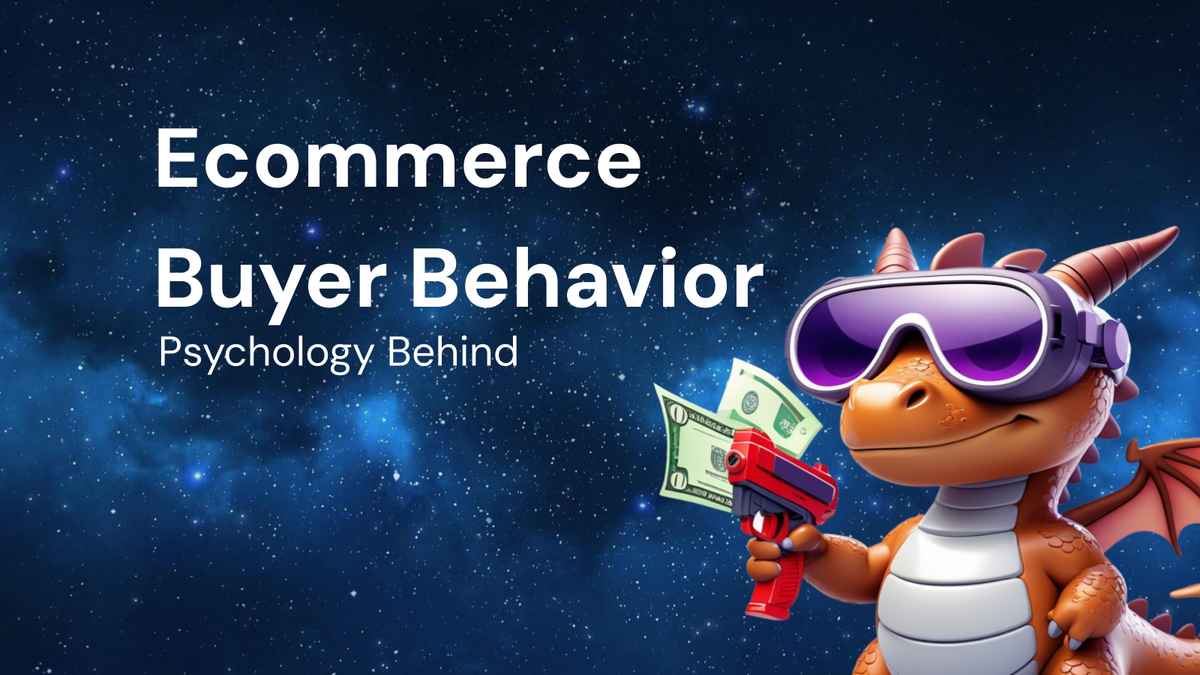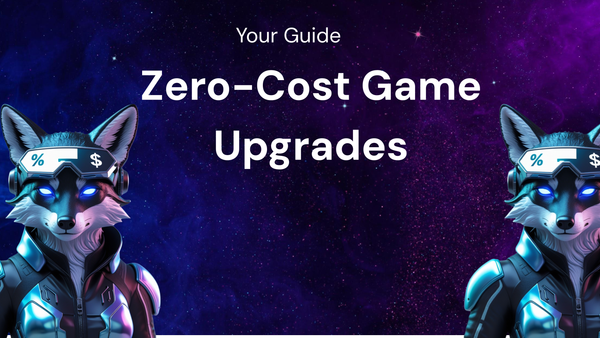The Psychology Behind Ecommerce Trends: Understanding Buyer Behavior

The Psychology Behind Ecommerce Trends: Understanding Buyer Behavior
The world of ecommerce is in constant flux. New trends emerge seemingly overnight, capturing consumer attention and reshaping the digital marketplace. But behind these fleeting fads lies a deeper, more enduring force: human psychology. To truly understand why certain ecommerce trends take hold, and to predict future shifts, we need to delve into the fundamental principles that govern buyer behavior. This blog will explore the psychological underpinnings of several key ecommerce trends, providing insights that can help businesses thrive in the ever-evolving digital landscape.
I. The Foundation: Core Psychological Principles in Ecommerce
Before diving into specific trends, it's crucial to establish a foundation of key psychological principles that influence consumer behavior in the online world. These principles are the building blocks upon which successful ecommerce strategies are built.
- Loss Aversion: This cognitive bias highlights our tendency to feel the pain of a loss more acutely than the pleasure of an equivalent gain. In ecommerce, this translates to techniques like limited-time offers, scarcity marketing, and "abandoned cart" reminders. The fear of missing out on a deal or losing an item in their cart can be a powerful motivator for consumers to complete a purchase.
- Social Proof: Humans are social creatures, and we often look to others for validation and guidance, especially in uncertain situations. Online reviews, testimonials, influencer marketing, and displaying the number of customers who have purchased a product all leverage social proof to build trust and encourage purchases. The more people are seen endorsing a product or service, the more likely others are to follow suit.
- Cognitive Ease: Our brains prefer to conserve energy and avoid mental strain. Ecommerce experiences that are simple, intuitive, and easy to navigate are more likely to lead to conversions. This principle emphasizes the importance of clear product descriptions, uncluttered website design, fast loading speeds, and streamlined checkout processes. Reducing cognitive friction is key to maximizing sales.
- Reciprocity: This principle suggests that people are more likely to respond favorably to someone who has done something for them. Offering free samples, discounts, or valuable content in exchange for customer information or loyalty can create a sense of obligation and increase the likelihood of future purchases.
- The Decoy Effect: This occurs when the introduction of a third, less attractive option influences our choice between two other options. In ecommerce, this can be seen in pricing strategies where a premium option is introduced to make a mid-range option seem more appealing. The decoy option isn't necessarily intended to be purchased but rather to subtly nudge consumers towards the desired product.
- Anchoring Bias: This cognitive bias describes our tendency to rely too heavily on the first piece of information we receive (the "anchor") when making decisions. In ecommerce, the initial price displayed for a product can serve as an anchor, influencing our perception of its value even if that price is later discounted.
- Scarcity: The perception that something is limited or in short supply increases its desirability. Ecommerce retailers frequently use scarcity tactics like limited-edition products, flash sales, and low-stock notifications to create a sense of urgency and encourage immediate purchases.
II. Deconstructing Ecommerce Trends Through a Psychological Lens
Now that we've established these fundamental principles, let's examine how they manifest in several prevalent ecommerce trends:
- Personalization:
- Trend: Tailoring the shopping experience to individual customer preferences based on data collected about their browsing history, past purchases, demographics, and other relevant information. This includes personalized product recommendations, customized email marketing, and dynamic website content.
- Psychological Drivers:
- Cognitive Ease: Personalized recommendations reduce the cognitive load of searching for products, making the shopping experience more effortless and enjoyable.
- Relevance and Connection: Showing customers products that align with their interests fosters a sense of connection and understanding, increasing the likelihood of engagement and purchase.
- Reciprocity: By anticipating customer needs and providing personalized offers, businesses can create a sense of reciprocity and build customer loyalty.
- Mobile Commerce (M-Commerce):
- Trend: The increasing use of smartphones and tablets for online shopping. This includes mobile-optimized websites, dedicated shopping apps, and mobile payment options.
- Psychological Drivers:
- Convenience and Accessibility: Mobile devices offer unparalleled convenience, allowing consumers to shop anytime, anywhere. This aligns with our innate desire for immediate gratification and reduced effort.
- Habit Formation: The ease of accessing ecommerce platforms on mobile devices contributes to the formation of shopping habits, making it a routine part of daily life.
- Social Connection: Mobile devices facilitate social sharing and interaction, allowing consumers to easily share product recommendations and shopping experiences with their networks.
- Subscription Boxes:
- Trend: Curated boxes of products delivered regularly to customers on a recurring subscription basis. These boxes often cater to specific interests or needs, such as beauty products, snacks, or pet supplies.
- Psychological Drivers:
- The Endowment Effect: Once a customer subscribes and receives a box, they develop a sense of ownership and attachment to the products, increasing the likelihood of continued subscription.
- Surprise and Delight: The element of surprise in receiving a curated box each month triggers positive emotions and enhances the overall shopping experience.
- Cognitive Ease: Subscription boxes eliminate the need for constant decision-making and product research, simplifying the shopping process and reducing cognitive load.
- Visual Commerce (Image and Video-Based Shopping):
- Trend: The increasing use of high-quality images, videos, and interactive visuals to showcase products and create immersive shopping experiences. This includes augmented reality (AR) features that allow customers to virtually "try on" products.
- Psychological Drivers:
- Emotional Connection: Visuals evoke stronger emotions and create a more engaging shopping experience than text-based descriptions alone.
- Reduced Uncertainty: High-quality images and videos provide a more realistic representation of products, reducing uncertainty and building trust.
- Enhanced Imagination: Visual commerce allows customers to better visualize themselves using and enjoying the products, increasing their desire to purchase.
- Social Commerce:
- Trend: The integration of ecommerce functionalities within social media platforms, allowing customers to discover, browse, and purchase products directly from their social feeds.
- Psychological Drivers:
- Social Proof: Seeing products recommended or endorsed by friends, influencers, or other social media users leverages social proof to build trust and encourage purchases.
- Convenience and Integration: Social commerce streamlines the shopping process by eliminating the need to switch between platforms, making it more convenient and integrated into users' daily routines.
- Community and Belonging: Shopping on social media can foster a sense of community and belonging, as customers can share their experiences and connect with others who share similar interests.
- Voice Commerce:
- Trend: Using voice assistants like Amazon Alexa or Google Assistant to make purchases online.
- Psychological Drivers:
- Convenience and Efficiency: Voice commerce offers a hands-free, streamlined shopping experience, particularly for reordering frequently purchased items.
- Reduced Cognitive Load: Voice commands simplify the shopping process, reducing the cognitive effort required to browse and purchase products.
- Personalization and Familiarity: Voice assistants can learn user preferences and provide personalized recommendations based on past interactions, creating a sense of familiarity and trust.
- Sustainability and Ethical Consumption:
- Trend: Growing consumer demand for sustainable and ethically sourced products and brands. This includes a focus on eco-friendly materials, fair labor practices, and transparent supply chains.
- Psychological Drivers:
- Values Alignment: Consumers are increasingly seeking to align their purchasing decisions with their personal values, supporting brands that share their commitment to environmental and social responsibility.
- Emotional Gratification: Purchasing sustainable and ethical products can provide a sense of emotional gratification and contribute to a positive self-image.
- Social Influence: Consumers are influenced by social norms and peer pressure to adopt sustainable and ethical consumption habits.
III. Future Trends and the Evolving Psychology of the Online Shopper
Looking ahead, the psychology of the online shopper will continue to evolve, driving the emergence of new ecommerce trends. Here are a few potential trends and their psychological underpinnings:
- Immersive Experiences (Metaverse Commerce): As virtual and augmented reality technologies become more sophisticated, we can expect to see the rise of immersive ecommerce experiences within the metaverse. This could involve virtual showrooms, personalized product demonstrations, and interactive shopping environments that blur the lines between the physical and digital worlds.
- Psychological Drivers: Immersion, novelty, and enhanced engagement. The metaverse offers the potential to create highly engaging and personalized shopping experiences that appeal to our innate desire for novelty and exploration.
- Hyper-Personalization Driven by AI: Artificial intelligence (AI) will play an increasingly important role in personalizing the shopping experience. AI-powered algorithms will analyze vast amounts of data to understand individual customer preferences and behaviors, enabling retailers to deliver highly targeted product recommendations, personalized pricing, and customized marketing messages.
- Psychological Drivers: Relevance, convenience, and efficiency. Hyper-personalization driven by AI will make the shopping experience more relevant, convenient, and efficient, catering to our desire for effortless and personalized interactions.
- Increased Focus on Mental Wellbeing: Consumers are becoming increasingly aware of the impact of online shopping on their mental wellbeing. This could lead to a greater emphasis on mindfulness and mindful shopping practices, such as setting time limits for online browsing and avoiding impulsive purchases.
- Psychological Drivers: Self-awareness, self-control, and a desire for a healthier relationship with technology. Consumers will seek out brands and platforms that support their mental wellbeing and promote responsible shopping habits.
IV. Conclusion: Mastering Psychology for Ecommerce Success
Understanding the psychology behind ecommerce trends is crucial for businesses seeking to thrive in the dynamic digital marketplace. By recognizing the fundamental principles that govern buyer behavior, businesses can design more effective marketing campaigns, create more engaging shopping experiences, and build stronger relationships with their customers. As ecommerce continues to evolve, staying attuned to the psychological needs and motivations of online shoppers will be the key to unlocking sustainable success. By embracing these insights, businesses can not only adapt to emerging trends but also anticipate and shape the future of ecommerce. The future of ecommerce is not just about technology, it's about understanding the human mind.




